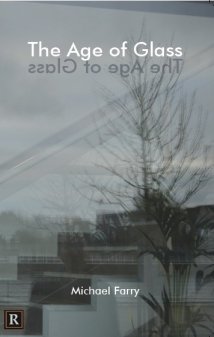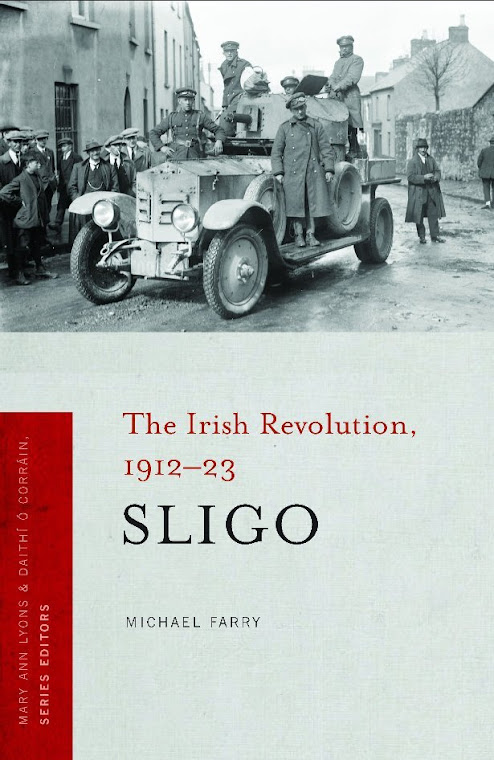 Last Tuesday my Australian cousin and myself climbed Knocknashee Hill between Tubbercurry and Coolaney, Co Sligo. {It's the hill in the masthead (bloghead?) above.} Our parents were born close by and had climbed the hill in their youth so this was an essential part of a Sligo visit. The rain and the wind only added a necessary touch of hardship to the occasion.
Last Tuesday my Australian cousin and myself climbed Knocknashee Hill between Tubbercurry and Coolaney, Co Sligo. {It's the hill in the masthead (bloghead?) above.} Our parents were born close by and had climbed the hill in their youth so this was an essential part of a Sligo visit. The rain and the wind only added a necessary touch of hardship to the occasion.The summit of the hill has a fairly recently identified hill fort with hut circles and habitation sites. There are two stone cairns on top one of which has an open chamber. No excavations have yet been carried out on the hill.
In spite of the rain there was an impressive view from the top. To the north are the Ox Mountains and the peak closest to Coolaney, Doomore, has a cairn on the top. Over the Ox Mountains we could just make out Knocknarea with its cairn. To the south east is the hill of Keash with its cairn.
In between there are smaller hills some of which have mounds or cairns. None of these mounds have been excavated, they may contain tombs, passage graves possibly. There are a number of Wedge Graves especially along the slopes of the Ox Mountains and an array of old burial grounds and church ruins in every direction.
The term Sacred Landscape has been used extensively to describe just such an area. It's not a term I like, smacking as it does of something else rather than the day to day living and dying that went on here and everywhere else over thousands of years. People lived and made their marks some of which survive, some not.
Anyway Knocknashee and the area around it is a wonderful landscape which is probably better off remaining relatively unknown. I can't help comparing it to a much more famous hill, Tara, with its few earthworks with fancy made-up names.
There is an emigrant ballad called The Hill(s) of Knocknashee. A number of versions on YouTube, here and here. You can buy a version here.
So there's not a great reason for me to write a poem on the visit . . . or is there? It was All Soul's Day of course.







4 comments:
There's an interesting book on that landscape, "Pi in the Sky". Sacred or not, I don't know, but interesting!
FM.
Great pic!
Thanks for sharing about Knocknashee. The one and only time I climed it, I was a little boy of maybe 7 or 8 years (50 yrs ago) and I climbed it with my mum - we were visiting (from England) her mum (my grandmother). My mum grew up on a small farm at the foot of Knocknashee (They were Henrys). I remember her telling us that it meant 'hill of the fairies', and I don't know whether it's still there, but I recollect her showing us a couple of rocks which made a sort of seat looking over the view you mentioned. She called it the 'wishing seat.' I also remember her telling us a legend about the giant that was going to move the hill, but it was too big for him to carry, so he was going to take it a bit at a time. He took the top off (hence Knocknashee is flat-topped), but soon tired or his journey and put the top down and left it - now called Mucklty. Thanks again for the trip down memory lane.
David
Thanks Michael for your great pics of Knocknashee. However, despite your discomfort with the term 'sacred' This landscape is definitely very sacred and the people who built its monuments were a very 'religious' people indeed. These monuments had obviously deep 'supernatural' power and significance for these people also, as did the 'ritual' landscape they were built on. It is obvious that some sort of pilgrimage took place here that involved processions across the landscape from monument to monument and probably culminating on the summit of Knocknarea, the most sacred hill of them all. This pilgrimage was annual (probably taking place at different significant dates throughout each year) and guaranteed that the natural world they inhabited continued to provide for the very large population that lived there. This was also their 'Garden of Eden' where the gods or more succinctly the Goddess', 'Meave?' created the whole universe they knew, at the beginning of time. As such this is a mythic landscape and by traversing it the people guaranteed that the magic that created the universe they inhabited continued to flow and provide and sustain them year after year. Eliade called this phenomenon the 'eternal return'. Croagh Patrick is another example of this sacred landscape and was almost certainly used as a place of pilgrimage thousands of years before the Christians discovered it and its first 'religious' use was probably coeval with the use of this landscape.
Post a Comment